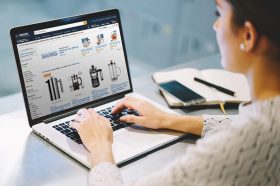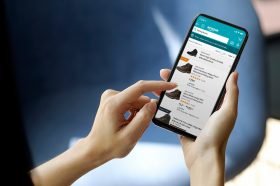Resources - Blog
How to Protect Your Brand on Amazon [Webinar Recap]
![How to Protect Your Brand on Amazon [Webinar Recap]](https://feedvisor.com/wp-content/uploads/2019/02/how-to-protect-your-brand-on-amazon-aleva-stores-01.jpg)
Stay on top of the latest e-commerce and marketplace trends.
In Feedvisor’s inaugural report that polled business leaders from more than 500 major U.S. brands, an overwhelming 95% of stakeholders cited that defending their brand against unauthorized sellers is a motivating factor behind their decision to sell on Amazon. Additionally, counterfeit items present another obstacle for brands to overcome — two-thirds of those actively selling on Amazon are taking measures to combat the sale of counterfeit items on the platform.
Although enrolling to Amazon’s Brand Registry can significantly help you monitor for fraudulent or unauthorized listings, there are several other strategies that can be implemented to help prevent brand erosion, preserve your brand equity, and ensure open lines of communication with your authorized sellers on the marketplace. In our latest webinar, Feedvisor was joined by client Nicole Reich of Retail Bloom to lead a discussion on various ways to protect your brand on Amazon.
Amazon Selling Options
On Amazon, brands can leverage various selling models which have different associated benefits and challenges. A first-party seller is a brand manufacturer that sells inventory directly to Amazon, who then sells it to the end user. For shoppers, these items appear on Amazon with the label “Ships from and sold by Amazon.com.” Brands interact with Amazon’s vendor management team and the relationship is managed through a portal known as Vendor Central.
With Vendor Central, Amazon has a consistent PO structure that they utilize for replenishment, but you have less catalog control. Amazon owns the product they purchase from you and decides what content the product detail pages are populated with. They also may implement price matching to all channels.
For example, if a product you sell to Amazon has a MAP (minimum advertised price) of $25 and you want Amazon to sell it at that price, you need to know that if Walmart or another e-commerce marketplace has the same item for $20, Amazon may lower their price and break MAP to stay competitive.
A third-party seller uses Amazon as a marketplace to sell directly to consumers. These items appear with the labels “Fulfilled by Amazon” or “Ships from and sold by (retailer name).” The interface that these sellers use is called Seller Central.
Brands with their own third-party stores, as well as authorized resellers, acquire their inventory by purchasing it directly from the manufacturer, buying it from other retailers or small businesses and reselling it, or buying it off the gray market and selling stolen or counterfeit goods. Retail Bloom, our partner on this webinar, provides services regarding identifying unknown sellers and inauthentic products to brands who do not have the bandwidth to take on these time-consuming processes themselves.
With Seller Central, you are responsible for listing products, as well as item fulfillment and customer service. You have complete control of your product offering and pricing and do not operate with purchase orders to Amazon. However, you will need a dedicated team to manage the process — monitoring various factors that influence success such as pricing, inventory, demand, reputation, and more.
MAP Monitoring on Amazon
Creating a MAP policy and enforcing it through all of your channels is an ongoing commitment. However, with Feedvisor’s MAP report, you can monitor and further enforce the policy. By sending your MAP policy to all of your seller customers, they will be informed that these are the prices they need to abide by. The Feedvisor MAP report records the seller, the discount they are extending, the SKU, and the percentage below MAP.
With a MAP monitoring feature, you can export the data and sort by the brand and merchant name so you can effectively take action and go back to your third-party sellers and bring up the MAP agreement, informing them that you will take action and they should bring the prices back up to meet MAP. With MAP monitoring, you can accurately monitor violations and identify new rogue sellers.
The Importance of the Buy Box
Another reason to take MAP monitoring seriously is because it impacts the Buy Box. More and more, Amazon is monitoring other sites to determine the Buy Box price and price match to other marketplaces. For example, let’s say the retail price for a product that you are selling is $24.99, but the average Buy Box price is $17. This means that if you aren’t priced at $17, you are less likely to win the Buy Box.
When you are not in the Buy Box, Amazon will show a clause that says “Available from these sellers” which will prompt the shopper to click on that screen, go to the list of third-party sellers, and add the product to their cart that way. Consumers may view this as an uncredible product listing and they may go to a competitor’s listing or not convert at all. To mitigate this risk, you can utilize Feedvisor’s price optimization and intelligence platform to help you maintain or increase your Buy Box share without compromising profit margins.
Not only does the Buy Box price ensure that you are remaining competitive with changes in the marketplace, but it also impacts your overall sales and advertising strategies. With a significant majority of Amazon sales funneling through the Buy Box, maintaining control over the Buy Box price is a driving factor in increasing your sales. To note, this will be relevant for brands with their own 3P storefronts and for authorized resellers. In addition to organic sales, your Buy Box eligibility directly impacts the success of your advertising campaigns. To see placement of your Sponsored Products, you need to be in the Buy Box.
Final Thoughts
The key takeaway from the brand protection webinar is that establishing a credible brand reputation and presence on Amazon takes time. You need tools and hands-on expertise to help you manage brand protection, but it is an ongoing process. Challenges can arise, such as leaks in supply chain or distribution, that can cause damage to existing policies, terms, or seller relationships within your network and it is up to you to proactively take the steps to identify issues early and take action against noncompliant sellers and resellers.
Learn what Feedvisor can do for your business.
When you partner with Feedvisor, you automatically receive access to our true, AI-driven technology and hands-on team of e-commerce experts. Contact one of our team members today to learn more about our end-to-end solution for brands and large sellers on Amazon, Walmart, and e-marketplaces.
![7 Ways to Successfully Liquidate Amazon Inventory [Guide]](https://feedvisor.com/wp-content/uploads/2019/02/cover-amazon-7-ways-to-successfully-liquidate-inventory-280x186.jpg)


